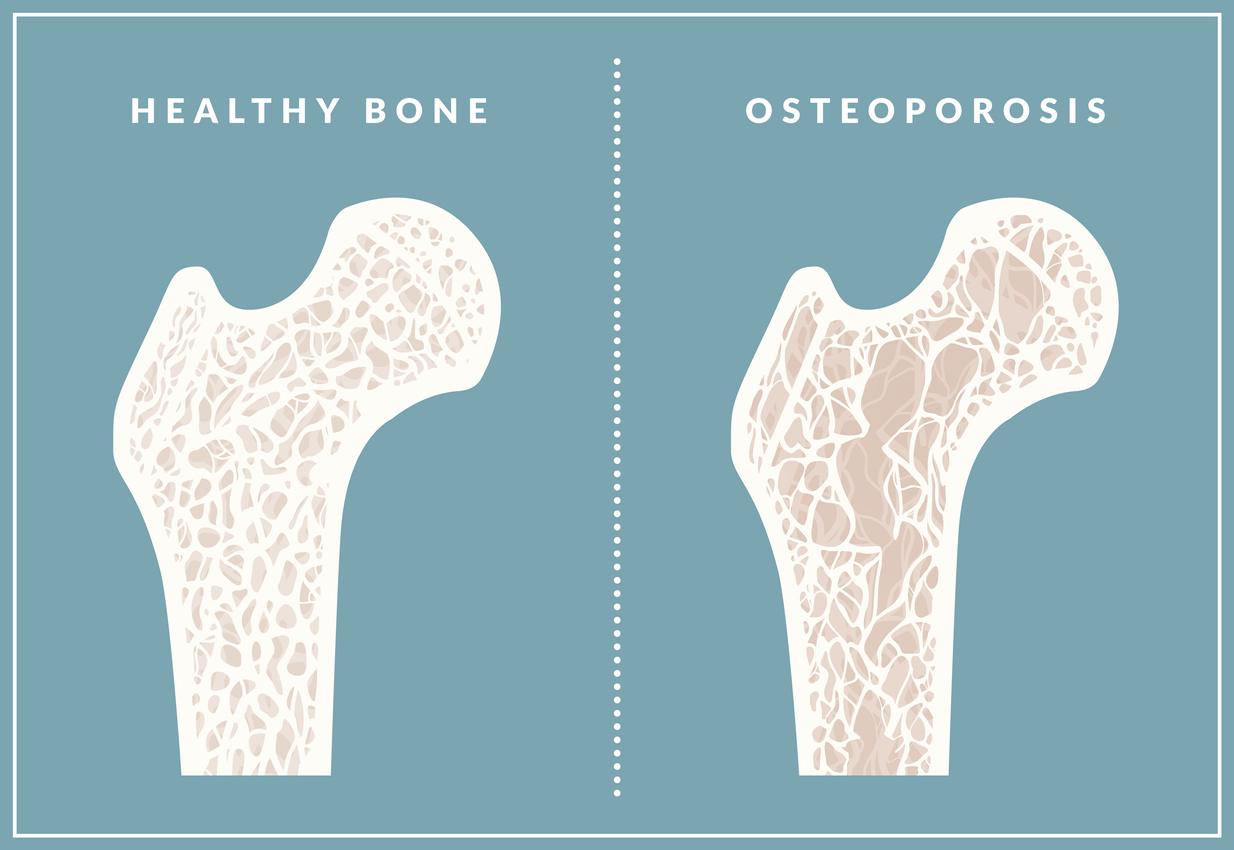
Osteoporosis is a chronic, progressive condition that primarily is characterized by the loss of bone density. In many cases, people have no idea they have osteoporosis until they either fracture a bone or have a bone density test. Osteoporosis is very common and can be prevented or treated by a number of methods and means, some of the most common of which are –
Exercise
Exercise is probably the best preventive measure and non-medical treatment to reduce osteoporosis risk as well as the pain and discomfort that comes with osteoporosis. Cardio exercises like swimming, walking and cycling build up cardiovascular strength, while weight-bearing exercises strengthen weak bones. Flexibility exercises like yoga help with joint strength and range of motion. A good bone-friendly exercise regime would include all three of these sorts of exercises under the supervision of a personal trainer or physical therapist.
Diet
When it comes to osteoporosis, there are foods you should enjoy and those you should avoid. For strong bones, it’s best to eat foods that are rich in vitamins and minerals. Fruits high in vitamin C have been shown to prevent bone loss, as are foods that are rich in calcium such as dairy and leafy green veggies. Figs, potatoes and prunes are also good for your bones, as are tuna and peanut butter. Foods to avoid include those that are high in sodium, fats, and preservatives.
Medications
Bisphosphonates – examples include Boniva and Fosamax – are the most commonly prescribed medication for patients with high-risk osteoporosis and are used to prevent bone loss and reduce risk of bone fracture. Denosumab is administered intravenously, usually every six months, and is effective at reducing risk of fractures. However, once you start on this drug, discontinuing is not advisable as it increases bone fracture risk if you do. Selective Estrogen Receptor Modulators – SERM – is an FDA-approved medication that is used for the prevention and treatment of osteoporosis in postmenopausal women. SERMs act like estrogen on the bone, protecting its density.
Home Modifications
Treatment for osteoporosis also includes preventive measures. Modifications, such as installing assistive devices in your home, as well as keeping areas well-lit and frequently used items within reach, are all easy fixes to reduce fall risk.
Knowing Your Risk
As we age, we tend to lose bone density; this is especially true of post-menopausal women and men if they have low testosterone. A number of medical conditions, ranging from celiac disease, diabetes, inflammatory bowel disease and thyroid disorder, to name a few, can also increase your risk of developing osteoporosis. In these cases, treating or managing the underlying condition and symptoms can also help reduce osteoporosis risk.
Bone Density Screening in North Dakota
As North Dakota’s largest orthopedic practice, The Bone & Joint Center offers an array of orthopedic procedures and services, to include surgical and non-surgical care options. Our expert team of medical professional is comprised of orthopedic surgeons and advanced practice providers (physician assistants and nurse practitioners) as well as physical, occupational, and hand therapists.
When was the last time you had a bone density screening? If you think you have early signs of osteoporosis and would like to prevent its progression, call us today at (701) 946-7400 / (866) 900-8650 or request an appointment. Our friendly team of physicians, nurses, and physical therapists are happy to serve you!

